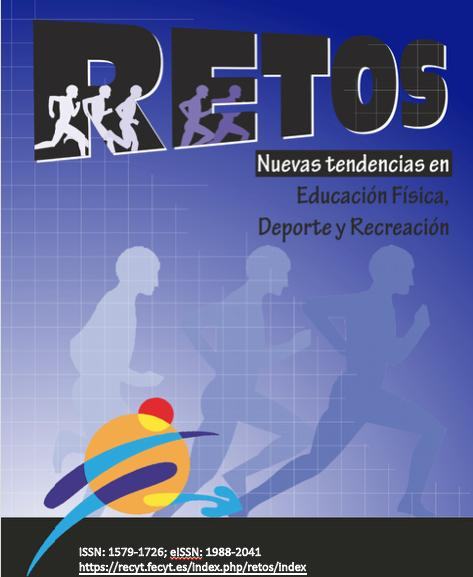Inclusive physical education in secondary schools: a bibliometric analysis of publications from 2000 to 2024
DOI:
https://doi.org/10.47197/retos.v64.111747Keywords:
Inclusive Physical Education, Middle School, Bibliography, VOSviewerAbstract
Introduction Inclusive physical education has gained attention globally due to its importance in fostering equity and participation for all students. However, research on this topic, particularly in secondary schools, remains limited.
Objective This study investigates the field of inclusive physical education in secondary schools using a bibliometric analysis based on data from the Scopus database.
Methodology A total of 129 articles were selected through keyword searches analyzed with the Publish or Perish software to extract relevant data, alongside VOSviewer for visualizing and interpreting results. The findings reveal that research on inclusive physical education in secondary schools remains relatively underexplored, with only 129 publications identified between 2000 and 2024.
Results The analysis uncovered ten primary keyword clusters: including (1) Attitudes, (2) Health, (3) Secondary Schools, (4) Education, (5) Physical Education, (6) Inclusion, (7) Disabilities, (8) Self-efficacy, (9) Participation, and (10) Physical Impairments. These clusters provides a comprehensive overview of the field’s thematic areas and trends.
Discussion The study concludes that significant gaps persist in the literature, emphasizing the need for further exploration to enhance understanding and practice in this field.
Conclusions Recommendations include extending research to inclusive physical education at the elementary level and focusing on methods to improve the skills and participation of children with disabilities within inclusive settings.
References
Burke, T. A., Cascio, W. E., Costa, D. L., Deener, K., Fontaine, T. D., Fulk, F. A., Jackson, L. E., Munns Jr, W. R., Orme-Zavaleta, J., & Slimak, M. W. (2017). Rethinking environmental protection: Meeting the challenges of a changing world. Environmental Health Perspectives, 125(3), A43–A49.
De Vroey, A., Struyf, E., & Petry, K. (2016). Secondary schools included: a literature review. International Journal of Inclusive Education, 20(2), 109–135.
Holm, P., Goodsite, M. E., Cloetingh, S., Agnoletti, M., Moldan, B., Lang, D. J., Leemans, R., Moeller, J. O., Buendía, M. P., & Pohl, W. (2013). Collaboration between the natural, social and human sciences in global change research. Environmental Science & Policy, 28, 25–35.
Lieberman, L. J., & Houston-Wilson, C. (2017). Strategies for Inclusion: Physical Education for Everyone (3rd ed.). https://doi.org/10.1017/CBO9781107415324.004
Liu, X. (2013). Full-Text Citation Analysis : A New Method to Enhance. Journal of the American Society for Information Science and Technology, 64(July), 1852–1863. https://doi.org/10.1002/asi
Marron, S., Murphy, F., Pitsia, V., & Scheuer, C. (2023). Inclusion in Physical Education in primary schools in Europe through the lens of an Erasmus+ partnership. Education 3-13, 51(5), 715–730. https://doi.org/10.1080/03004279.2021.2002382
Miszkiewicz, J. J., & Cooke, K. M. (2019). Socio-economic determinants of bone health from past to present. Clinical Reviews in Bone and Mineral Metabolism, 17(3), 109–122.
Parey, B. (2022). Accommodations for the inclusion of children with disabilities in regular schools in Trinidad: a mixed methods approach. International Journal of Inclusive Education, 26(6), 559–575. https://doi.org/10.1080/13603116.2019.1701719
Pattie Rouse. (2009). Inclusion in Physical Education.
Pereira, A. M. A., Celestino, T. F. de S., & Ribeiro, E. do R. J. (2022). Determinantes para uma Educação Física Inclusiva: perceção de um conjunto de professores especialistas em inclusão (Determinants for an Inclusive Physical Education: perception of a group of specialist teachers in inclusion) (Determinantes para una Educación Física Inclusiva: percepción de un grupo de docentes especialistas en inclusión). Retos, 47, 282–291. https://doi.org/10.47197/retos.v47.94755
Schwarz, N., & Bohner, G. (2001). The construction of attitudes. Blackwell Handbook of Social Psychology: Intraindividual Processes, 436–457.
Siedentop, D., & Van der Mars, H. (2022). Introduction to physical education, fitness, and sport. Human kinetics.
Stidder, G., & Hayes, S. (2012). Equity and Inclusion in Physical Education and Sport: Second edition. In Equity and Inclusion in Physical Education and Sport. https://doi.org/10.4324/9780203132845
Taylor, K. M., & Betz, N. E. (1983). Applications of self-efficacy theory to the understanding and treatment of career indecision. Journal of Vocational Behavior, 22(1), 63–81.
Tristani, L. (2021). Taking Steps to Inclusion: A Content Analysis of a Resource Aimed to Support Teachers in Delivering Inclusive Physical Education. International Journal of Disability, Development and Education, 68(1), 116–135. https://doi.org/10.1080/1034912X.2019.1662890
Van Eck, N. J., & Waltman, L. (2010). Software survey: VOSviewer, a computer program for bibliometric mapping. Scientometrics, 84(2), 523–538. https://doi.org/10.1007/s11192-009-0146-3
Williams, G., Albrecht, G., Seelman, K., Bury, M., & French, S. (2001). Theorizing disability. London: Thousand Oaks.
Xue, R., Chai, H., Yao, L., & Fu, W. (2023). The influence of school inclusive education climate on physical education teachers’ inclusive education competency: The mediating role of teachers’ agency. Frontiers in Psychology, 14, 1079853. https://doi.org/10.3389/fpsyg.2023.1079853
Mujica-Johnson, F. N., Concha López, R., Peralta Ferroni, M., & Burgos Henríquez, S. (2024). Gender
Downloads
Published
How to Cite
Issue
Section
License
Copyright (c) 2025 Iman Rubiana, Sugeng Purwanto, Muhammad Hamid Anwar

This work is licensed under a Creative Commons Attribution-NonCommercial-NoDerivatives 4.0 International License.
Authors who publish with this journal agree to the following terms:
- Authors retain copyright and ensure the magazine the right to be the first publication of the work as licensed under a Creative Commons Attribution License that allows others to share the work with an acknowledgment of authorship of the work and the initial publication in this magazine.
- Authors can establish separate additional agreements for non-exclusive distribution of the version of the work published in the journal (eg, to an institutional repository or publish it in a book), with an acknowledgment of its initial publication in this journal.
- Is allowed and authors are encouraged to disseminate their work electronically (eg, in institutional repositories or on their own website) prior to and during the submission process, as it can lead to productive exchanges, as well as to a subpoena more Early and more of published work (See The Effect of Open Access) (in English).
This journal provides immediate open access to its content (BOAI, http://legacy.earlham.edu/~peters/fos/boaifaq.htm#openaccess) on the principle that making research freely available to the public supports a greater global exchange of knowledge. The authors may download the papers from the journal website, or will be provided with the PDF version of the article via e-mail.


